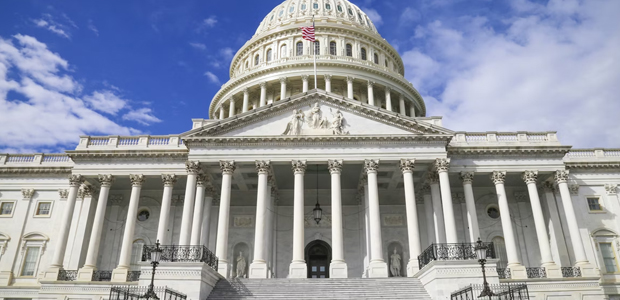The One Big Beautiful Bill Act, officially designated as H.R. 1 in the 119th Congress, represents one of the most significant pieces of domestic policy legislation in recent years. The House July 3 voted 218-214 to pass the final version of the One Big Beautiful Bill Act (H.R. 1), which enacts many of President Trump’s legislative priorities on taxes, border security, energy and deficit reduction.
 Among its many provisions, the legislation introduces substantial modifications to the Medicaid program that will reshape healthcare access for millions of Americans.
Among its many provisions, the legislation introduces substantial modifications to the Medicaid program that will reshape healthcare access for millions of Americans.
Financial Impact and Scale
The financial implications of the Act’s Medicaid provisions are substantial. Since the House-passed bill would cut federal Medicaid payments to states by $863 billion over the next ten years, and since only two of the bill’s 26 Medicaid provisions would increase federal Medicaid spending, it is hardly surprising that the playing field is littered with losers. Alternative estimates suggest even larger cuts, with some analyses indicating cuts Medicaid funding by $930 billion over 10 years.
Key financial impacts include:
- Massive Federal Cuts: Reductions totaling $863-930 billion over the decade represent one of the largest contractions in federal healthcare spending in recent history.
- Coverage Loss: Nearly 12 million additional Americans will lack insurance by 2034 due to reduced federal support for both Medicaid and Affordable Care Act marketplaces.
- Medicaid-Specific Impact: An estimated 11.8 million Americans will specifically lose Medicaid coverage over the next ten years, representing a significant reduction in the safety net program.
These reductions will have far-reaching consequences for healthcare coverage, affecting not only individual beneficiaries but also the broader healthcare delivery system that relies on Medicaid reimbursements.
Work Requirements Implementation
One of the most significant changes introduces mandatory work requirements for certain Medicaid beneficiaries. The One Big Beautiful Bill Act created federal work requirements for Medicaid recipients, which amount to 80 hours a month in community engagement activities to maintain eligibility.
Specific requirements include:
- Target Population: Adults in the Medicaid expansion population, ages 19 to 64, must meet work requirements to maintain coverage starting December 31, 2026.
- Monthly Obligation: Beneficiaries must complete at least 80 hours per month of qualifying work or community engagement activities, equivalent to 20 hours per week.
- Exemptions Available: Individuals with disabilities and other vulnerable populations are exempt from these requirements, though the administration emphasizes these apply only to able-bodied adults.
The projected impact of these work requirements is significant. Of the 7.8 million people losing Medicaid coverage: 4.8 million lose coverage due to work requirements, while the remainder face coverage loss due to increased administrative barriers and more frequent eligibility checks.
Enhanced Verification and Administrative Requirements
Beyond work requirements, the Act introduces more stringent verification processes and administrative requirements. KFF is tracking the Medicaid provisions in the 2025 federal budget bill, including new Medicaid work and verification requirements and a reduction in the expansion match rate for states that use their own funds to cover undocumented immigrants.
New administrative measures include:
- Stricter Verification: Enhanced verification measures aim to ensure program integrity but may create additional barriers to enrollment and maintenance of coverage.
- Regulatory Moratorium: The legislation prohibits CMS from implementing or enforcing eligibility rules for Medicaid, CHIP, Basic Health Program, the Medicare Savings Program, and long-term care staffing standards until October 1, 2034.
- Complex Transition: This moratorium on certain regulatory enforcement creates a complex regulatory environment during the transition period, requiring careful navigation by states and providers.
These enhanced verification processes will require significant administrative adjustments at both federal and state levels, potentially creating additional challenges for beneficiaries seeking to maintain coverage.
Impact on Medicaid Expansion and Federal Matching

The Act directly targets the Affordable Care Act’s Medicaid expansion program. Note that several provisions of the act focus on the Affordable Care Act’s Medicaid expansion, which offered enhanced federal matching funds to states that expanded Medicaid coverage to adults with incomes between 100%–138% of the federal poverty line (i.e., $21,597 for an individual in 2025). The legislation reduces federal matching rates for states under specific circumstances, particularly those that extend coverage to undocumented immigrants using state funds.
This reduction in federal support creates fiscal pressure on state governments and may influence their decisions regarding program continuation and scope. States that have invested significant resources in Medicaid expansion may face difficult choices about maintaining current coverage levels or reducing benefits and eligibility.
Home and Community-Based Services Modifications
The Act includes modifications to Home and Community-Based Services (HCBS) programs. The OBBBA creates a new category in 1915(c) HCBS waivers that will cover people who do not meet the existing requirement of needing an institutional level of care to receive HCBS. States would be allowed to apply to access this funding as long as their proposed program does not increase the overall federal expenditure. This represents one of the few areas where the legislation potentially expands access to services, though within strict fiscal constraints.
Rural Healthcare Implications
Rural healthcare providers face particular challenges under the new legislation. As of May 2025, there were approximately 2,086 rural hospitals receiving $12.2 billion a year in net revenue from Medicaid. At the median, rural hospitals’ revenue from Medicaid is $3.9 million a year. Rural hospitals have some of the lowest operating margins in the nation, especially compared to their urban counterparts.
Critical concerns for rural healthcare include:
- Financial Vulnerability: Rural hospitals already operate on thin margins and depend heavily on Medicaid reimbursements to maintain operations and serve their communities.
- Service Reduction Risk: The substantial cuts to Medicaid funding may force some rural facilities to reduce services, consolidate operations, or potentially close entirely.
- Healthcare Desert Creation: Hospital closures could create healthcare deserts in already underserved areas, leaving entire communities without accessible medical care.
The reduction in Medicaid funding threatens the financial viability of these critical healthcare institutions, with potentially devastating consequences for rural communities that already struggle with healthcare access.
Administrative and Operational Changes
The legislation introduces several administrative changes designed to reduce program costs and increase oversight. These include provisions for enhanced payment accuracy, fraud prevention measures, and modified reimbursement structures.
Key operational modifications include:
- Payment Accuracy: When erroneous payments for ineligible individuals occur, states face financial penalties that encourage more rigorous eligibility verification processes.
- Frequent Redeterminations: The Act implements more frequent eligibility redeterminations, requiring beneficiaries to verify their continued eligibility more regularly than under previous requirements.
- Administrative Burden: While intended to ensure program integrity, these measures may create administrative burdens for both beneficiaries and state agencies, potentially impeding access to care.
These changes represent a shift toward increased scrutiny and verification within the Medicaid program, with implications for both program administration and beneficiary experience.
Fraud Prevention and Eligibility Verification
 A significant component of the legislation focuses on fraud prevention and ensuring that benefits reach only eligible recipients. The One Big Beautiful Bill ends Medicaid and SNAP fraud and ensures these programs serve only eligible Americans. This includes enhanced verification requirements for immigration status, income, and other eligibility criteria.
A significant component of the legislation focuses on fraud prevention and ensuring that benefits reach only eligible recipients. The One Big Beautiful Bill ends Medicaid and SNAP fraud and ensures these programs serve only eligible Americans. This includes enhanced verification requirements for immigration status, income, and other eligibility criteria.
The legislation establishes new mechanisms for cross-referencing databases to identify potential fraud or ineligibility, though critics argue that these measures may also create barriers for legitimate beneficiaries who face challenges navigating complex administrative requirements.
Implementation Timeline and Transition
The implementation of these changes follows a phased approach. The amendments made by this section shall apply to months beginning after December 31, 2025. This timeline provides states with time to adjust their systems and processes, though the complexity of the changes presents significant implementation challenges.
State governments must modify their eligibility systems, train staff on new requirements, and develop processes for tracking work requirements and enhanced verification procedures. The transition period requires careful coordination between federal and state agencies to ensure continuity of care for current beneficiaries.
Long-term Implications for Healthcare Access
 The cumulative effect of these changes will fundamentally alter the landscape of healthcare access in the United States. The combination of work requirements, enhanced verification, reduced federal matching, and funding cuts creates multiple barriers to Medicaid enrollment and retention. Budget Office estimates that, taken together, these changes will result in 16 million more uninsured people in the year 2034 than would otherwise be the case.
The cumulative effect of these changes will fundamentally alter the landscape of healthcare access in the United States. The combination of work requirements, enhanced verification, reduced federal matching, and funding cuts creates multiple barriers to Medicaid enrollment and retention. Budget Office estimates that, taken together, these changes will result in 16 million more uninsured people in the year 2034 than would otherwise be the case.
This increase in uninsured individuals will likely strain emergency departments, community health centers, and safety-net providers who serve as the healthcare provider of last resort. The reduction in Medicaid coverage may also impact public health initiatives, preventive care programs, and chronic disease management efforts.
State-Level Variations and Responses
States will experience varying impacts based on their current Medicaid programs, expansion status, and demographic characteristics. States with larger Medicaid expansion populations may face greater challenges in implementing work requirements and managing coverage transitions.
Different state responses may include:
- State Funding Decisions: Some states may choose to use state funds to maintain coverage for individuals who lose federal Medicaid eligibility, while others may lack the fiscal capacity to do so.
- Labor Market Factors: The legislation’s impact will vary based on state labor market conditions, availability of jobs that meet work requirement thresholds, and existing social service infrastructure.
- Implementation Challenges: States with higher unemployment rates or limited job opportunities may struggle to help beneficiaries meet work requirements, potentially leading to higher coverage loss rates.
This variation in state capacity and response will create a patchwork of Medicaid access across the country, with some states better positioned to maintain coverage than others.
Healthcare System Adaptation
Healthcare providers, particularly those serving high-Medicaid populations, must adapt their business models and service delivery approaches. Hospitals may need to increase their charity care programs or seek alternative funding sources to maintain services for uninsured patients. Community health centers and federally qualified health centers may see increased demand for their sliding-fee scale services.
The changes may also accelerate trends toward value-based care arrangements and alternative payment models as providers seek to maximize efficiency and manage costs in an environment of reduced Medicaid reimbursement.
Summary: The One Big Beautiful Bill Act’s Impact on Medicaid
![]() The One Big Beautiful Bill Act represents a fundamental shift in Medicaid policy, prioritizing fiscal restraint and work requirements over coverage expansion. While supporters argue these changes will reduce program costs and encourage self-sufficiency, critics contend they will increase the uninsured population and strain the healthcare safety net.
The One Big Beautiful Bill Act represents a fundamental shift in Medicaid policy, prioritizing fiscal restraint and work requirements over coverage expansion. While supporters argue these changes will reduce program costs and encourage self-sufficiency, critics contend they will increase the uninsured population and strain the healthcare safety net.
The full impact of these modifications will become apparent over the coming years as implementation proceeds and affected populations navigate the new requirements and restrictions. The success or failure of these policies will likely influence future debates about the role of government in healthcare provision and the balance between fiscal responsibility and healthcare access.
Contact us today to speak with someone on how we can be a Medicaid billing resource for your healthcare provision.

